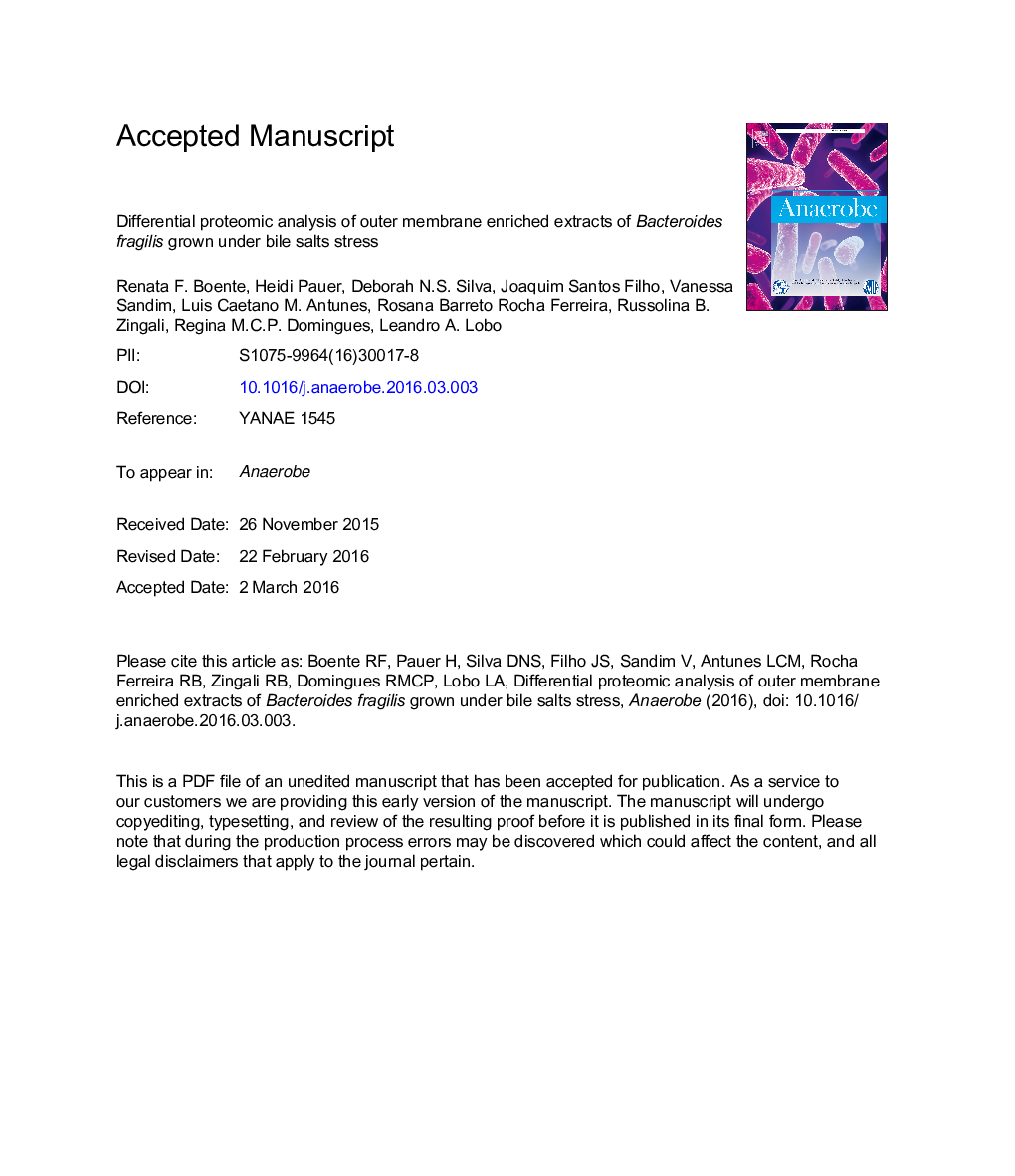| Article ID | Journal | Published Year | Pages | File Type |
|---|---|---|---|---|
| 6128625 | Anaerobe | 2016 | 31 Pages |
Abstract
Bacteroides fragilis is the most commonly isolated anaerobic bacteria from infectious processes. Several virulence traits contribute to the pathogenic nature of this bacterium, including the ability to tolerate the high concentrations of bile found in the gastrointestinal tract (GIT). The activity of bile salts is similar to detergents and may lead to membrane permeabilization and cell death. Modulation of outer membrane proteins (OMPs) is considered a crucial event to bile salts resistance. The primary objective of the current work was to identify B. fragilis proteins associated with the stress induced by high concentration of bile salts. The outer membrane of B. fragilis strain 638R was isolated after growth either in the presence of 2% conjugated bile salts or without bile salts. The membrane fractions were separated on SDS-PAGE and analyzed by ESI-Q/TOF tandem mass spectrometry. A total of 37 proteins were identified; among them nine were found to be expressed exclusively in the absence of bile salts whereas eight proteins were expressed only in the presence of bile salts. These proteins are related to cellular functions such as transport through membrane, nutrient uptake, and protein-protein interactions. This study demonstrates the alteration of OMPs composition in B. fragilis during bile salts stress resistance and adaptation to environmental changes. Proteomics of OMPs was also shown to be a useful approach in the identification of new targets for functional analyses.
Related Topics
Life Sciences
Immunology and Microbiology
Microbiology
Authors
Renata F. Boente, Heidi Pauer, Deborah N.S. Silva, Joaquim Santos Filho, Vanessa Sandim, Luis Caetano M. Antunes, Rosana Barreto Rocha Ferreira, Russolina B. Zingali, Regina M.C.P. Domingues, Leandro A. Lobo,
